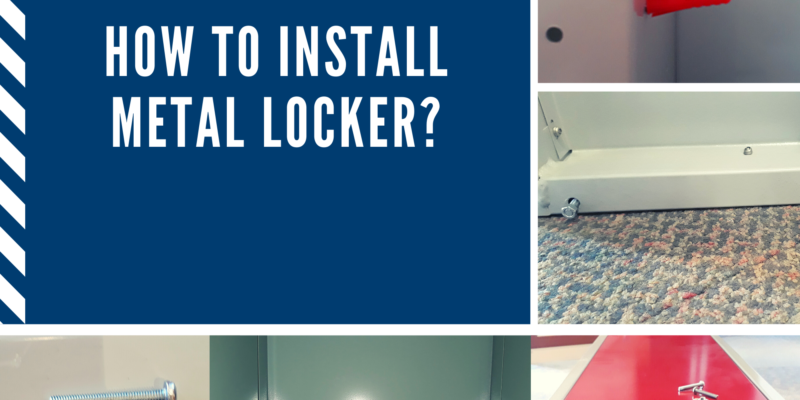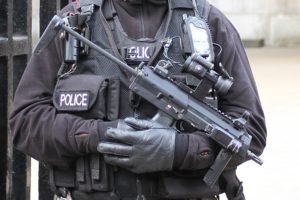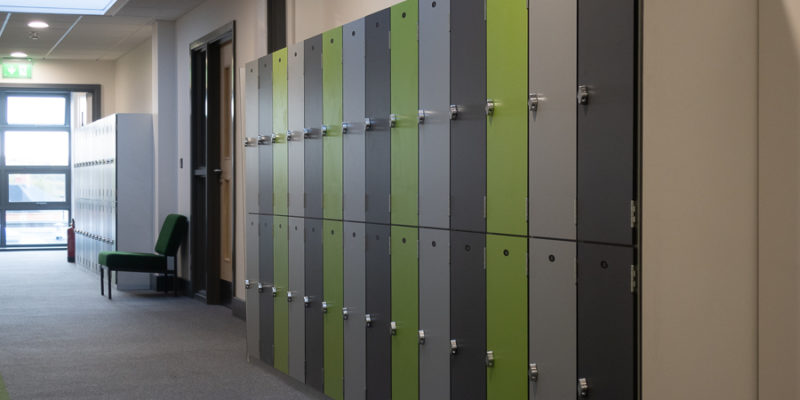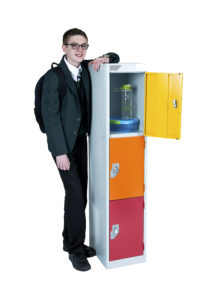Installing lockers may be easy for Helmsman professionals, but can be a tricky job for anyone doing it for the first time. This is why we want to provide you with the essential tips on how to install metal lockers safely.
There are some things that you should consider before starting the installation. Firstly the size of the room, ceiling height, fixtures, fittings and location, as this will affect the positioning and layout of your lockers. Measurements of the area need to be specific and you have to allow approximately 4mm extra at the sides of each locker. Allow corridor widths of approximately 1000mm minimum especially in schools and consider the space for when opening doors.
You also need to consider the position of any windows or doors. Make sure your lockers will not block access to any windows or doors which still need to be opened. Take note of things like skirting boards, radiators, heating pipes, light switches, and sockets etc.
Make sure you install on a strong, level and even surface, are the floors level? If there is a slope to the floor, you will need to position them on locker stands with adjustable feet, stands can be ordered alongside your lockers. Check the suitability of the wall before fitting, is the area suitable to be drilled into? If that is a ‘yes’ you are ready to go.
Let’s install your lockers
For your locker installation, you will need a spirit level, spanner, drill and handling equipment. Fixings, nesting nuts and bolts will be provided. Ideally, two people are required to do an installation especially if the lockers are front heavy such as glass or laminate lockers. Suitable PPE may be required for safety reasons. When and if offloading the lockers, do it front faced as they are heavy and could tip over and get damaged.
Most lockers are tall and thin, depending on your requirements and specifications but they could be unstable if they are not fixed to the wall or each other. A single run of lockers must be secured to a suitable anchor point with a suitable bracing mechanism. Lockers on stands or seat/stands should be fixed down to the stand or seat/stand as well as side to side and back to a wall or run of lockers. It is really important that lockers placed back to back are bolted together securely because the lockers industry has had fatalities in the past.
Upkeep of your lockers
Cleaning lockers is easy; simply use a duster or soft cloth. It is recommended that all locks and hinges are regularly maintained with a suitable lubricant. If any doors or locks become damaged, we recommend replacing these as soon as possible so security is not compromised. Helmsman offer replacement doors and parts.
Please note this only applies to metal and heavy-duty lockers. For further guidance or to find out more please call us on 01284 727626 or email hello@helmsman.co.uk





